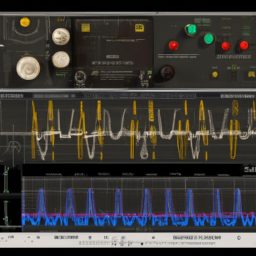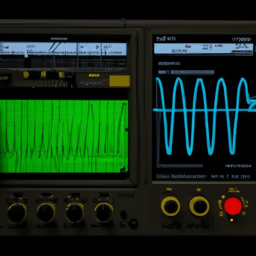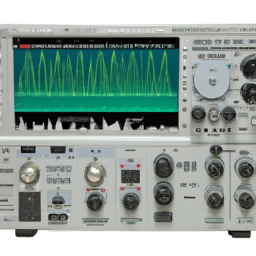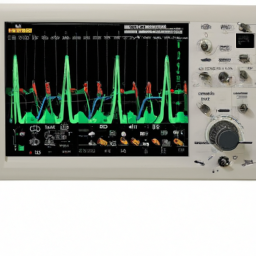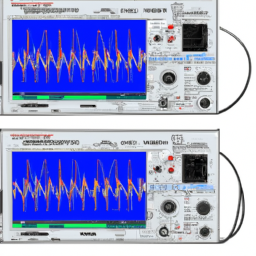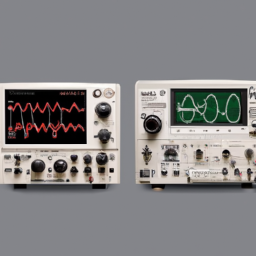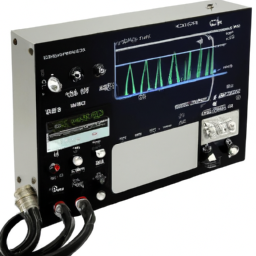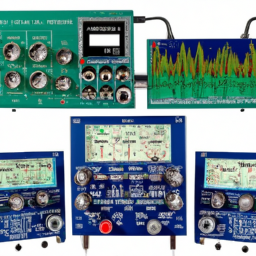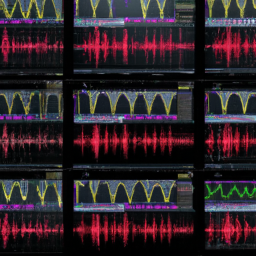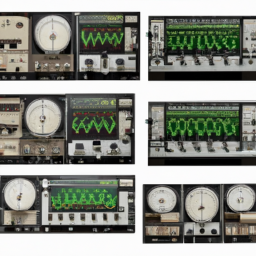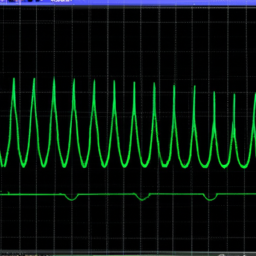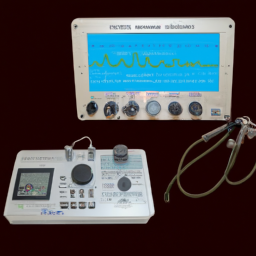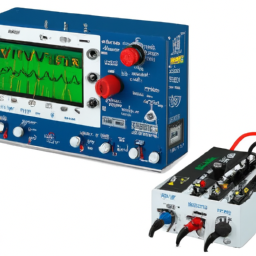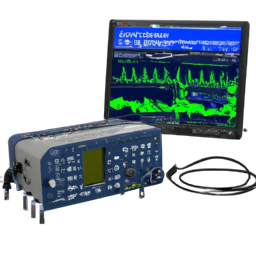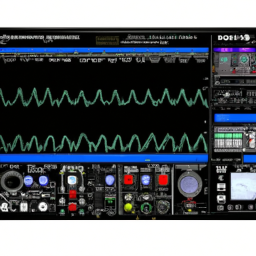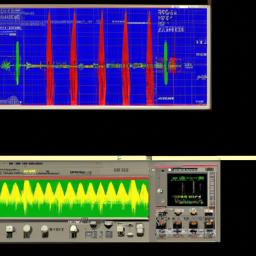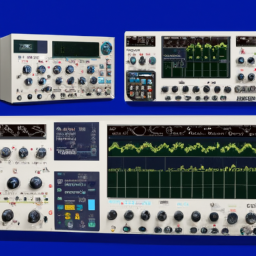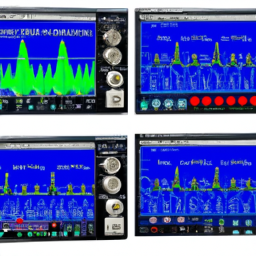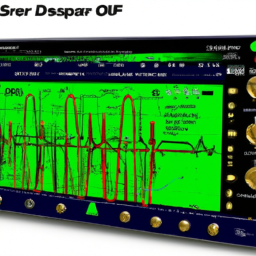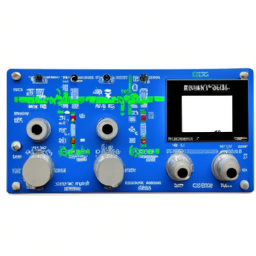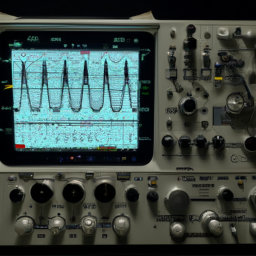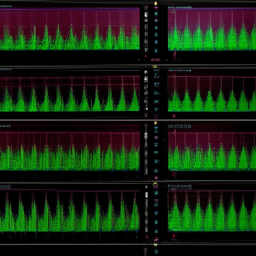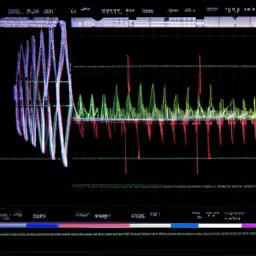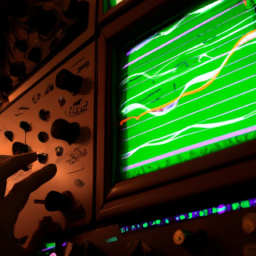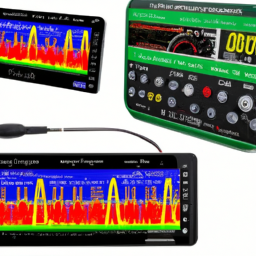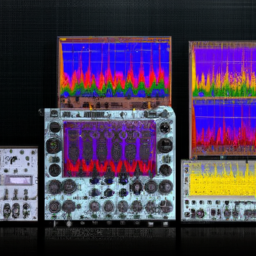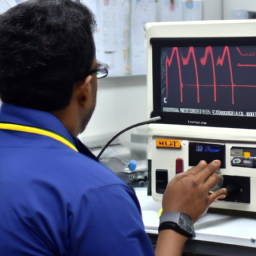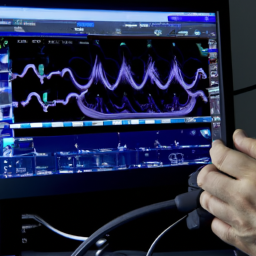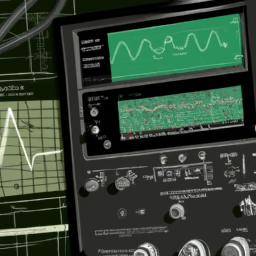Did you know that over 90% of oscilloscopes used today are digital? With the rapid advancement of technology, digital oscilloscopes have become the go-to choice for many engineers and technicians. However, analog oscilloscopes still hold their ground in certain applications.
In this article, we will explore the differences between analog and digital oscilloscopes, specifically focusing on their user-friendliness. Analog oscilloscopes, with their classic display and intuitive controls, have long been favored for their ease of use. They provide real-time waveform visualization and are known for their robustness and simplicity. On the other hand, digital oscilloscopes offer a plethora of features and advanced analysis capabilities, making them highly versatile but potentially more complex for beginners.
In this discussion, we will delve into the features and functions of both analog and digital oscilloscopes, evaluating their user-friendliness based on factors such as ease of setup, waveform capture, and data analysis. By the end of this article, you will have a clearer understanding of which type of oscilloscope is better suited for your specific needs. So, let’s dive in and discover which oscilloscope reigns supreme in terms of ease of use – analog or digital!
Key Takeaways
- Digital oscilloscopes have an intuitive interface and controls, reducing the learning curve for operation.
- Digital oscilloscopes offer advanced analysis capabilities, including various triggering options for precise measurements.
- Digital oscilloscopes provide accurate and precise measurements, with higher performance, bandwidth, and faster sampling rates compared to analog oscilloscopes.
- Digital oscilloscopes offer enhanced functionality, such as waveform storage, automatic measurements, and computer connectivity.
Features and Functions of Analog Oscilloscopes
An analog oscilloscope allows you to easily adjust the vertical and horizontal controls to precisely view and measure electrical waveforms. The user interface of an analog oscilloscope typically consists of knobs and buttons that control the various settings, such as voltage scale, timebase, and trigger level. This makes it easy to make quick adjustments and fine-tune the display to get the desired waveform.
Additionally, analog oscilloscopes have a high measurement accuracy, as they directly display the input signal without any digital processing. This can be particularly useful when working with fast-changing signals or when precise measurements are required.
Moving on to the features and functions of digital oscilloscopes, they offer a range of advantages over analog oscilloscopes, such as advanced triggering options and the ability to capture and analyze waveforms digitally.
Features and Functions of Digital Oscilloscopes
One of the advantages of digital oscilloscopes is the wide range of features and functions they offer. Can you imagine having access to advanced measurement capabilities and analysis tools all in one device?
Digital oscilloscopes have a higher performance compared to analog oscilloscopes. They provide higher bandwidth, faster sampling rates, and better accuracy. Digital oscilloscopes also offer various triggering options, including edge, pulse, and video triggers, allowing for more precise measurements.
Another advantage is the ability to store and recall waveform data, allowing for easier analysis and comparison. However, digital oscilloscopes have their disadvantages as well, such as limited bandwidth and the potential for aliasing.
Despite these drawbacks, the advanced features and capabilities of digital oscilloscopes make them a powerful tool for engineers and technicians.
Moving on to the user-friendliness of analog oscilloscopes…
User-Friendliness of Analog Oscilloscopes
Analog oscilloscopes offer a user-friendly experience with their intuitive interface and controls. You’ll find it easy to navigate the settings and make adjustments as needed.
Additionally, the process of adjusting measurements on an analog oscilloscope is straightforward, allowing for quick and efficient analysis of waveforms.
Intuitive interface and controls
Using a digital oscilloscope, you’ll find it’s intuitive interface and controls easy to navigate. Here are four reasons why:
-
Intuitive design: Digital oscilloscopes have a user-friendly layout with clear menus and icons. This makes it easy to find and access various functions and settings.
-
Minimal learning curve: The intuitive interface of digital oscilloscopes reduces the time required to learn how to operate them. You can quickly understand and utilize the features without extensive training.
-
Precise measurements: Digital oscilloscopes provide accurate and precise measurements due to their advanced technology. The clear display and customizable settings enable you to capture and analyze signals with ease.
-
Enhanced functionality: Digital oscilloscopes offer additional features like automated measurements, waveform analysis, and customizable displays. These capabilities empower you to perform complex tasks efficiently.
With the intuitive interface and controls of digital oscilloscopes, adjusting settings and making measurements becomes a seamless process.
Ease of adjusting settings and measurements
Adjusting settings and making measurements becomes a seamless process with the ease of use provided by the intuitive interface and controls of digital oscilloscopes. These oscilloscopes offer a range of features that allow for precise adjustments and accurate measurements. For example, the timebase can be easily adjusted to capture signals at different time intervals, allowing for detailed analysis of waveforms. Additionally, digital oscilloscopes often provide a higher level of accuracy in measurements compared to analog oscilloscopes. This is because digital oscilloscopes use advanced signal processing techniques that minimize noise and distortion. To give you a clear comparison, refer to the table below:
| Feature | Analog Oscilloscopes | Digital Oscilloscopes |
|---|---|---|
| Timebase Adjustments | Limited range | Wide range |
| Accuracy of Measurements | Less accurate | High accuracy |
The user-friendliness of digital oscilloscopes extends beyond just adjusting settings and making measurements. It encompasses various aspects of their design and functionality, which will be discussed in the subsequent section.
User-Friendliness of Digital Oscilloscopes
When it comes to digital oscilloscopes, one can easily navigate through the user-friendly interface to obtain accurate measurements. Digital oscilloscopes are designed with an intuitive interface that allows users to quickly adjust settings and make precise measurements without much effort. The menus and controls are organized in a logical manner, making it easy to find the desired functions.
Additionally, digital oscilloscopes often include helpful features like auto-setup and auto-measurements, which further simplify the process of obtaining accurate readings. While there may be a slight learning curve for those who are new to digital oscilloscopes, once you familiarize yourself with the interface, it becomes an efficient and straightforward tool to use.
Now, let’s delve into the comparison of analog and digital oscilloscopes.
Comparison of Analog and Digital Oscilloscopes
In the previous section, we discussed the user-friendliness of digital oscilloscopes. Now, let’s compare analog and digital oscilloscopes to see which one is easier to use. To help you understand the differences, let’s look at a 2 column and 3 row table:
| Advantages of Analog Oscilloscopes | Advantages of Digital Oscilloscopes |
|---|---|
| Easy to use without complex settings | Ability to store and analyze waveforms |
| Real-time display with no lag | High accuracy and precision measurements |
| Simple interface with intuitive controls | Easy connectivity to computers for data sharing |
Analog oscilloscopes have the advantage of being straightforward to use, with real-time display and a simple interface. On the other hand, digital oscilloscopes offer advanced features like waveform storage, precise measurements, and easy data sharing. Now that you understand the differences between the two, let’s move on to the next section to help you choose the right oscilloscope for your needs.
Choosing the Right Oscilloscope for Your Needs
When choosing the right oscilloscope for your needs, it’s important to determine your specific requirements and budget. Consider the bandwidth, sample rate, and number of channels needed for your applications.
Additionally, think about the long-term usability and future needs of your oscilloscope. This includes considering software and firmware updates, expansion options, and compatibility with future technologies.
Determining your requirements and budget
Consider your requirements and budget when deciding between analog and digital oscilloscopes. To help you make an informed decision, here are some factors to consider:
-
Evaluate the performance: Determine the frequency range and bandwidth you need for your specific applications. Analog oscilloscopes are often better suited for high-frequency signals, while digital oscilloscopes offer more advanced features and better accuracy.
-
Understand the specifications: Take into account the sample rate, memory depth, and waveform update rate. These factors will affect the oscilloscope’s ability to capture and display signals accurately.
-
Consider the cost: Analog oscilloscopes are generally less expensive upfront, but digital oscilloscopes offer better long-term value due to their advanced features and software capabilities.
-
Think about future needs: Consider your future requirements, such as the need for advanced analysis tools or the ability to upgrade the oscilloscope’s software.
Considering these factors will help you choose the oscilloscope that best fits your needs and budget. Now, let’s move on to considering long-term usability and future needs.
Considering long-term usability and future needs
Don’t let your future needs and long-term usability be left in the dark, make sure to think ahead and plan for the ever-evolving world of oscilloscopes. When considering long-term usability and future needs, it is important to evaluate the long term reliability of analog oscilloscopes and the advancements in digital oscilloscope technology.
Analog oscilloscopes have been around for decades and are known for their ruggedness and reliability. They are often preferred in certain applications where precise waveform measurements are required. However, they may lack some of the advanced features and functionalities that digital oscilloscopes offer.
On the other hand, digital oscilloscopes have seen significant advancements in technology. They offer higher bandwidth, faster sampling rates, and advanced triggering capabilities. Additionally, they come with features like waveform storage, automatic measurements, and the ability to connect to a computer for data analysis.
To help you understand the differences between analog and digital oscilloscopes, consider the following table:
| Feature | Analog Oscilloscopes | Digital Oscilloscopes |
|---|---|---|
| Bandwidth | Limited | Wide range |
| Sampling Rate | Lower | Higher |
| Advanced Features | Few | Abundant |
| Connectivity | Limited | Extensive |
Considering your long-term reliability needs and the advancements in digital oscilloscope technology, it is recommended to carefully weigh your requirements and budget to make an informed decision.
Frequently Asked Questions
Can I perform advanced signal analysis and measurements using an analog oscilloscope?
Yes, you can perform advanced signal analysis and measurements using an analog oscilloscope. However, it’s important to note that analog oscilloscopes have limitations compared to digital oscilloscopes. They may not offer the same level of accuracy, precision, and functionality for advanced signal processing. Digital oscilloscopes have advanced features like FFT analysis, waveform math, and automated measurements that make them more suitable for complex signal analysis tasks.
Are digital oscilloscopes more prone to glitches or software errors compared to analog oscilloscopes?
Digital oscilloscopes are generally reliable, but they can be more prone to glitches or software errors compared to analog oscilloscopes. This is because digital oscilloscopes rely on complex software algorithms to process and display the waveform data.
On the other hand, analog oscilloscopes have a simpler design and do not rely on software, making them less susceptible to software errors. However, digital oscilloscopes offer many advantages over analog oscilloscopes, such as advanced measurement capabilities and the ability to store and analyze data.
Can I upgrade the features and functionality of an analog oscilloscope, or am I limited to its initial capabilities?
Yes, you can upgrade the features and functionality of an analog oscilloscope to some extent. However, it’s important to note that analog oscilloscopes have limitations when it comes to compatibility with modern technology. While you can add certain accessories and components to enhance its capabilities, it may not be able to fully match the advanced features of digital oscilloscopes. Therefore, if you require more advanced functionalities and compatibility with modern technology, it’s recommended to consider using a digital oscilloscope.
Are digital oscilloscopes more expensive than analog oscilloscopes?
Digital oscilloscopes are more cost-effective compared to analog oscilloscopes. They offer several advantages in terms of cost.
First, digital oscilloscopes have a longer lifespan, reducing the need for frequent replacements.
Second, they offer more advanced features such as data storage and analysis capabilities, eliminating the need for additional equipment.
Additionally, digital oscilloscopes are often more affordable to maintain and repair.
Overall, choosing a digital oscilloscope can save you money in the long run.
What are the main considerations when choosing between an analog and a digital oscilloscope for hobbyist use?
When considering an oscilloscope for hobbyist use, there are key factors to consider.
One important factor is the signal resolution offered by analog and digital oscilloscopes. Digital oscilloscopes generally offer better signal resolution due to their ability to sample and display waveforms with higher precision.
Other factors to consider include bandwidth, sample rate, memory depth, and ease of use.
These factors will help you choose the right oscilloscope for your hobbyist electronics projects.
Conclusion
In conclusion, when it comes to the battle between analog and digital oscilloscopes, the latter emerges as the clear winner in terms of user-friendliness. With its intuitive interface and advanced features, the digital oscilloscope proves to be a reliable companion in the world of electronics.
Just like a seasoned guide leading you through the labyrinth of waveforms, it simplifies complex measurements and provides accurate readings. So, if you’re seeking an oscilloscope that effortlessly navigates the intricacies of signal analysis, the digital option is your go-to choice.


